The nuances of growing rosemary at home in a pot
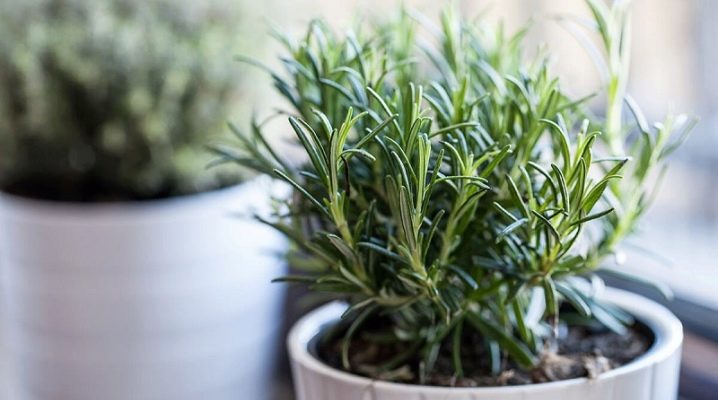
Spicy herbs today can be found not only in the beds of experienced gardeners. They successfully decorate modern dwellings. At the same time, it becomes possible at any time to use the required amount of fresh seasonings for the preparation of a particular dish.
Along with this, the plant will fill the air with its unique aroma and phytoncides. But it is important to take into account certain nuances of growing rosemary at home in a pot, as well as in an apartment on a windowsill or on a balcony.
Variety selection
The success of growing the described spice plant at home will directly depend on the correct approach to choosing a variety. Today, the following varieties of rosemary can be attributed to the most suitable for cultivation at home in pots:
- Tenderness - a variety, one of the main characteristic features of which can be called the height of the bushes, reaching a meter mark. This rosemary has a spicy aroma and foliage with outstanding palatability. Differs in bush height up to 1 meter and amazing aroma.
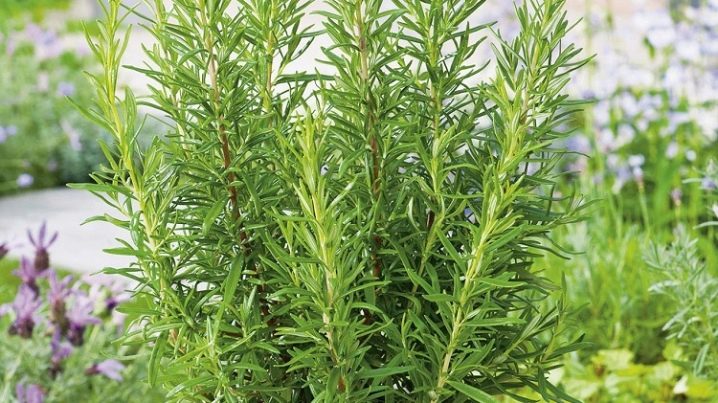
- Dewdrop - a variety that is valued for its sweetish smell and unique taste, which made it very popular. It is worth noting that this rosemary is used in cooking only from the second year of life.
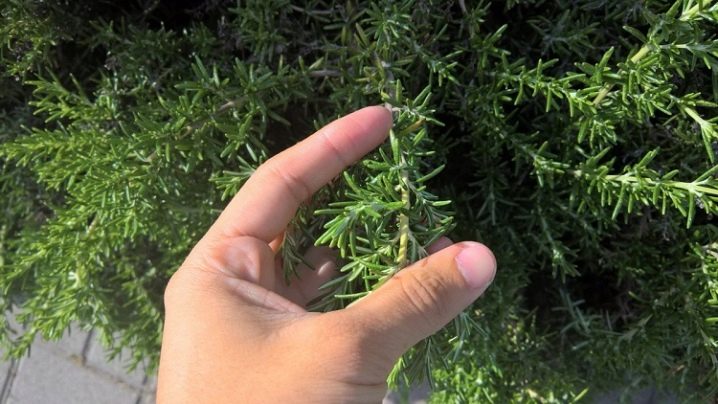
- Blue jerboa - a low-growing species that can be recognized by the fragrant panicle inflorescences that adorn the plant from March to May.
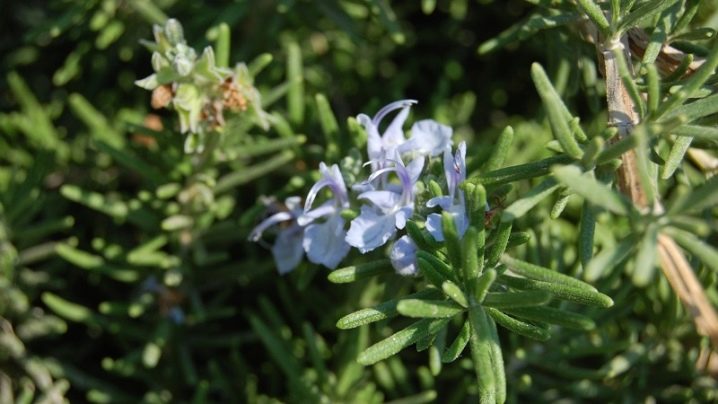
- Lavender - a variety of rosemary that has a pronounced spicy aroma and also has outstanding medicinal properties. This variety is equally successfully cultivated both in pots on windowsills and in open ground in different areas.
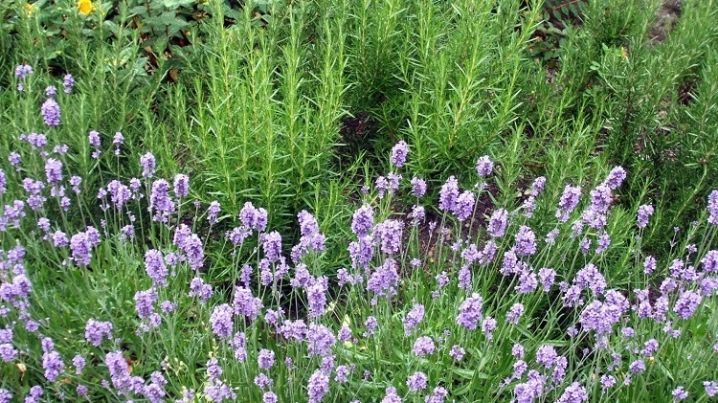
- Roseus - tall (bush height up to 1.3 m) rosemary, a distinctive feature of which are large flowers. To form a decorative crown, pruning is required.

- Corsican blue - the so-called container variety that grows well indoors. Many take out pots of rosemary in the garden for the summer. It blooms with blue flowers with a pleasant aroma, which adorn perennial shoots with fairly leathery leaf blades.
It is worth noting that all varietal varieties are widely used in medicine, cooking and even cosmetology. In parallel with this, as a houseplant, rosemary will be an effective element of the interior.

Landing
You can propagate rosemary using seeds and cuttings. The best sowing time is the first half of the spring. The process of obtaining seedlings at home is as follows:
- Pick up a container. A hole in the bottom is required.
- Drainage is laid about 20 mm from perlite or fine expanded clay.
- Fill the container with the substrate.
- Moisten the soil mixture with a spray gun.
- Seeds are sown on the surface. It is advisable to maintain intervals of 15-20 mm.
- Sprinkle with a 3 mm layer of a mixture of soil and sand.
- Cover the sowing with foil or glass.
- After the emergence of sprouts, the container is transferred to a well-lit place at 18-20 degrees.
- A month later they dive. It is most convenient to pick up seedlings with wooden sticks or spatulas so as not to injure the root system.
- Cups with a substrate are prepared, in the center of which shallow pits are made.
- Seedlings are placed in cups, sprinkled with substrate and slightly compacted.
- After 30-60 days, young plants are transplanted in a larger container.
The use of the grafting method is also quite simple. Initially, you need to focus on the preparation of the source material, which includes the following steps:
- The tops of the branches are cut (10-15 cm).
- Remove all leaves at the bottom of the cuttings.
- The workpieces are immersed in clean and necessarily soft water, which should be at room temperature. The depth of this immersion is approximately 3-4 cm. It is important to periodically add liquid as inevitable evaporation.
- Place the rooting shoots in a warm place. Optimal conditions will be created when the thermometer reads in the range from +22 to +25 degrees.
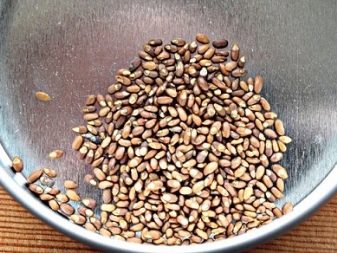
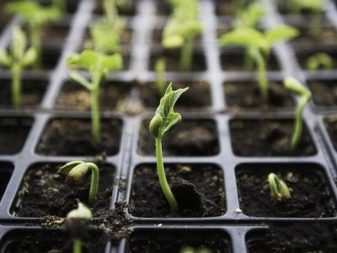
After the appearance of the first roots (15-20 days), seedlings are planted. This requires:
- Pick up special cassettes or cups (100 ml).
- Fill the container with soil mixture.
- Place the seedlings in the center of the containers, deepening them 30 mm.
- Water in moderation.
- Cover with bags or bottles with air holes.
- Send plantings to a warm room with good lighting.
- After the appearance of new leaves (3 to 5 weeks), gradually remove the shelters.
- Pinch the tops of the germinated cuttings to stimulate the formation of lateral shoots.
In addition to all of the above, it is important to know in what container and in what soil the rosemary should be planted. When choosing pots, it is worth considering the branching and size of the plant's root system. It is important that the width of the container is greater than the height. The best options would be ceramic products with the obligatory presence of holes in the bottoms. Regardless of whether you choose propagation by cuttings or seeds, you must use the correct soil. It should be slightly alkaline and as loose as possible. To prepare the substrate, take:
- sand - 1 part;
- peat - 1 tsp;
- humus - 1 tsp;
- leafy ground - 2 parts;
- sod land - 2 tsp.
Before planting, the resulting soil mixture is recommended to be spilled with a solution of potassium permanganate for disinfection.

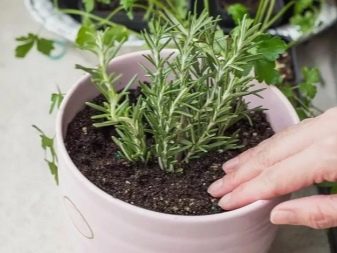
Growing care
To successfully grow rosemary at home, you need to have an idea of how to properly care for it. Even though it is an exotic Mediterranean dweller, it is not as finicky as one might think. This perennial is characterized by unpretentiousness and vitality. When growing it both in the beds and in indoor conditions, it will be necessary to create comfortable conditions through elementary agrotechnical techniques and measures.
Watering
It is noteworthy that rosemary belongs to the drought-resistant representatives of the southern flora. Based on this feature, it does not need to be watered too often and abundantly. However, maintaining a constant moderate soil moisture in pots will be the key to full development and active growth. It is important not to overdo it here, since the culture reacts extremely negatively to an excessively wet substrate.
At the same time, without extreme necessity, it is unacceptable to bring the earth to a complete and prolonged drying out. The result of such omissions is likely to be yellowing, followed by leaf fall and drying of the entire bush. Another important point is the quality of the water used for irrigation. It must be:
- clean;
- settled for at least 24 hours;
- room temperature.
The most relevant, especially for novice gardeners and florists, is the question of the frequency of watering. In this situation, there are no universal recommendations, since it is important to take into account the conditions created for the plant in each specific case and room. Based on this, the main factor determining the need for irrigation should be the condition of the soil in the pot. In the spring, summer months and at the beginning of the fall season, rosemary is watered on average at intervals of 4 days. In late autumn and winter, such activities are implemented much less frequently, and the irrigation itself becomes less abundant.
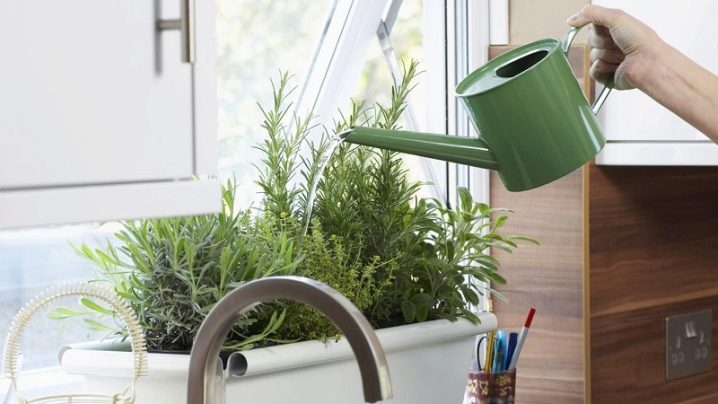
Top dressing
If the rosemary was planted and grows initially in fertile soil, then at first it will not have to be fed. But in the future, the situation will change dramatically. It is important to consider that in a pot the plant does not have such an area for receiving nutrients as in the garden. Given the conditions for growing rosemary as a green indoor pet, it will be necessary to periodically fertilize.
Experienced gardeners recommend feeding the soil in spring, using mineral complexes. It is important to focus on the content of phosphorus, potassium and nitrogen. Microelements will also not be superfluous in this situation. The preparation of solutions and their introduction should be carried out in strict compliance with the instructions attached by the manufacturer to each of the drugs used.
As a rule, a couple of dressings are enough for the plant with an interval of about a month. It is only worth remembering that in the second half of the summer season and in the autumn period, the application of phosphorus and potash fertilizers remains relevant. It turns out that nitrogen-containing dressings are excluded from the list at the specified time.

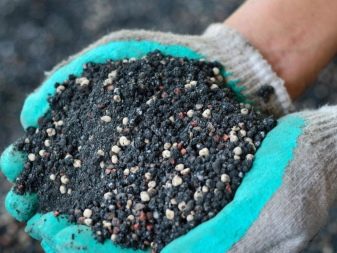
Transfer
When cultivating rosemary indoors, you will have to periodically transplant the plant, updating the container and substrate. In situations with young animals and older specimens, such procedures are recommended to be performed every year and once every 2-3 years, respectively. If you need to transplant rosemary, then it is best to do it in the spring, towards the end of April.
It is important to take into account that the transplant is carried out according to the transshipment principle, and the process itself includes the following stages:
- A few hours before the procedure, water the soil in a pot with a plant.
- A new container is selected, which should be slightly larger in size than the previous one.
- A drainage layer is laid at the bottom of the pot, on top of which a little substrate is poured.
- Carefully remove the bush along with an earthen lump.
- The "immigrant" is placed in a new place.
- Fill all the voids in the pot with soil mixture and compact it slightly.
At the final stage, all that remains is to water the transplanted rosemary abundantly. Then the pot should be sent for 1.5-2 weeks to a place protected from direct ultraviolet rays.

Pruning
To form bushes of upright varieties of rosemary, it will have to be pruned. This is done every April, starting from the second year of the plant's life. Do not forget about the decorative component of its cultivation. So, bushes in the form of balls will look very impressive on the windowsills or on the balcony. At the same time, the considered type of trim allows you to create almost any shape.
In parallel, the development of young shoots is stimulated, due to which splendor increases. The branches should be cut at the level of 3-4 internodes, which is located on last year's growth. By the way, the cut parts of the shoots are suitable for eating, as well as sending for storage with preliminary drying or freezing. There is also such an agrotechnical technique as anti-aging pruning. It is carried out once every 7 years. In such cases, in the spring, all branches are shortened at ground level.
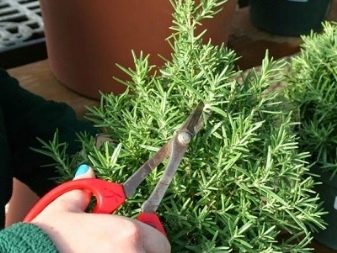
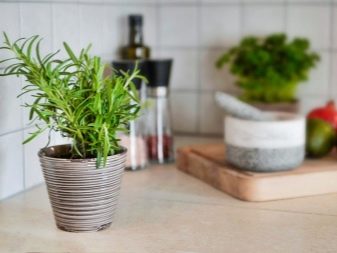
Diseases and pests
As practice shows, in indoor conditions, the described plant successfully resists most common infections. However, flower growers still have to face certain problems when rosemary dries up or its leaves turn black. In such situations, it is important to know what needs to be done in order to save the pet.
Powdery mildew is common in indoor rosemary. The main symptom of this ailment is white bloom, which spreads quickly enough. In the overwhelming majority of cases, the causes of the disease, as well as the development of other fungi, are high humidity in the air and soil in pots, as well as low temperature and insufficient ventilation of the room.Appropriate preventive measures will help prevent illness. But if it was not possible to avoid troubles, then the most effective remedy would be fungicide treatment.
Of the harmful insects, the greatest danger to rosemary is:
- spider mite;
- shield;
- aphid.
Ticks attack the lower surface of the leaf blades, wind their webs and actively suck the juices from plants. A well-proven folk remedy for combating this pest is an infusion of onion peel. The affected bushes should be treated three times with a 10-day interval between approaches.

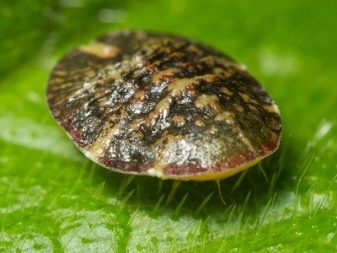
Aphids effectively destroy the decoction of tobacco, for the preparation and use of which it is necessary:
- soak 1 kg of shag in 5 liters of water;
- insist for 24 hours;
- boil for 30 minutes;
- pour 0.5 liters and dilute 10 liters of water.
It is important to consider that the use of chemicals to combat both infections and harmful insects is highly undesirable if it is intended to use rosemary for food or for another purpose. In extreme cases, the use of such biological insecticides as, for example, the drug "Fitoverm" is allowed. By the way, treating the substrate in pots with tobacco dust can be called a fairly effective preventive measure.
Long-term practice of growing the described culture at home has proven that most of the problems are the consequences of violations of the elementary rules of agricultural technology. And we are talking about the following most common troubles:
- The leaves turn yellow - the result of the fact that rosemary is poured. There is a risk of exposure to powdery mildew.
- Leaves dry and fall off - lack of moisture. Low humidity increases the likelihood of spider mite attacks.
- Stretching and loosening shoots - lack of light.
Summing up, we can say with confidence that most ailments, as well as attacks of parasites, will be avoided by competent care and timely preventive measures.
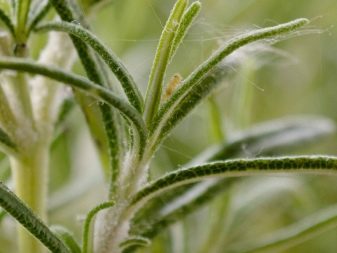
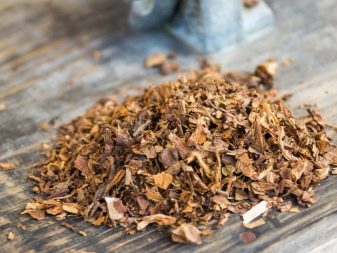
Harvesting and storage
Naturally, the ultimate goal and the most enjoyable stage in the cultivation of the described spice is reaping the fruits. It is important to note here that rosemary sprigs are widely and successfully used both fresh, dried and frozen. At the same time, in all cases, the beneficial properties of the plant are fully preserved.
Harvesting and processing for the subsequent storage of rosemary is as follows:
- Pluck off the top shoots with the utmost care. It is important to remember that it is on the tops that the most fragrant leaves are located.
- Rinse the branches thoroughly under running water and dry them on napkins or paper towels.
- Spread dried rosemary shoots evenly on a baking sheet, after covering its surface with parchment for baking.
- Dry the harvested crop in a dark and well-ventilated area for 23 weeks.
- Turn the twigs periodically to ensure even drying.
By the way, many housewives prefer to dry the collected spicy twigs in the oven or freeze them. Rosemary is usually stored in vacuum bags.









The comment was sent successfully.